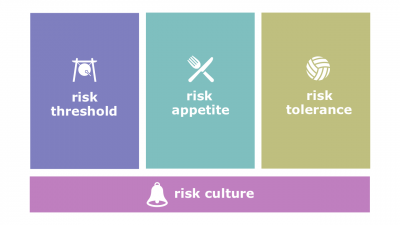Difference between revisions of "Risk culture"
(Created page with "400px|thumb|right|[[Risk culture]]Risk culture (hereinafter, the ''Culture'') is the part of organizational culture that accounts for risk...") |
(→Related coursework) |
||
| Line 6: | Line 6: | ||
*[[Risk threshold]]. The level of impact at which one or more [[stakeholder]]s may have a specific interest. Below the risk threshold, the [[enterprise]] will accept the [[risk]], and above the [[risk threshold]], the [[enterprise]] will not tolerate the risk. | *[[Risk threshold]]. The level of impact at which one or more [[stakeholder]]s may have a specific interest. Below the risk threshold, the [[enterprise]] will accept the [[risk]], and above the [[risk threshold]], the [[enterprise]] will not tolerate the risk. | ||
| − | ==Related | + | ==Related lectures== |
*[[Enterprise Intelligence Quarter]]. | *[[Enterprise Intelligence Quarter]]. | ||
[[Category: Septem Artes Administrativi]][[Category: Articles]] | [[Category: Septem Artes Administrativi]][[Category: Articles]] | ||
Latest revision as of 19:47, 4 January 2019
Risk culture (hereinafter, the Culture) is the part of organizational culture that accounts for risk appetite, risk tolerance, and risk threshold.
Related concepts
- Risk appetite. The degree of uncertainty an enterprise is willing to take on in anticipation of a reward.
- Risk tolerance. The degree, amount, or volume of the risk that an enterprise will withstand.
- Risk threshold. The level of impact at which one or more stakeholders may have a specific interest. Below the risk threshold, the enterprise will accept the risk, and above the risk threshold, the enterprise will not tolerate the risk.
